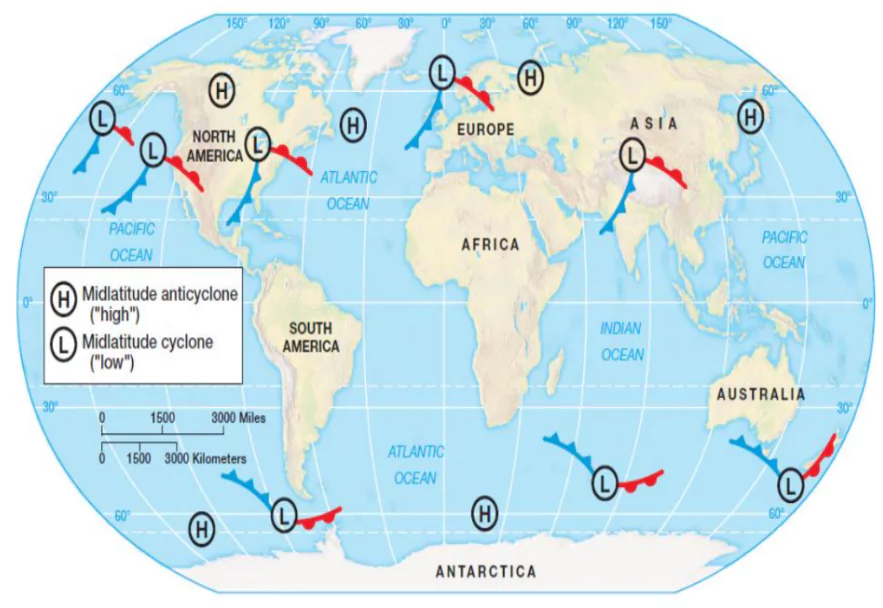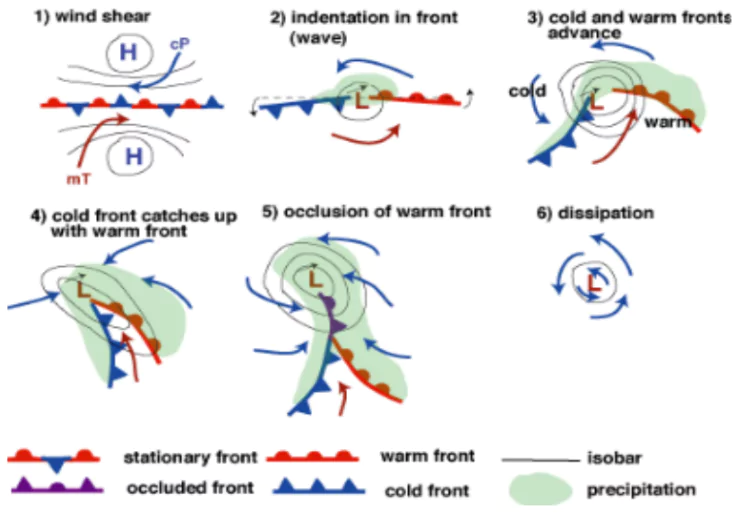![]() April 29, 2024
April 29, 2024
![]() 13769
13769
![]() 0
0
Temperate cyclones, also known as extratropical cyclones, are big storms in the atmosphere that can cause various types of weather, like light rain, strong winds, thunderstorms, snowstorms, and tornadoes. These storms are common in the middle parts of the world and bring rain to many populated areas when different masses of air meet between 30° and 70° latitude and move eastward with the westerly winds. Predicting their weather mainly focuses on looking westward.
Temperate Cyclones characteristics and understanding these differences is crucial for effective disaster preparedness, response, and mitigation efforts. Below are the characteristics of Temperate Cyclones:

 Ground-Level Disturbances: Various ground factors such as topography, temperature contrasts, and ocean currents can initiate cyclone formation.
Ground-Level Disturbances: Various ground factors such as topography, temperature contrasts, and ocean currents can initiate cyclone formation.| Must Read | |
| Current Affairs | Editorial Analysis |
| Upsc Notes | Upsc Blogs |
| NCERT Notes | Free Main Answer Writing |
| Related Articles | |
| Cyclone Hamoon | Rainfall in India: Monsoons, Variability, and Impact on Life |
| Latitudes, Longitudes and Heat Zones | Earth’s Temperature |
<div class="new-fform">
</div>
Latest Comments